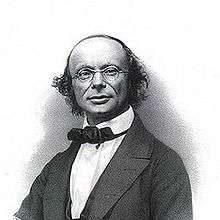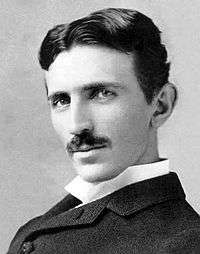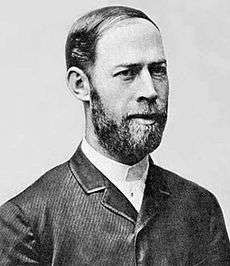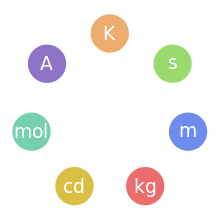List of scientists whose names are used as SI units
List of scientists whose names are used as SI units is the list of those scientists whose names are assigned as the names of the international units by the International Committee for Weights and Measures. The International System of Units (abbreviated SI from French: Système international d'unités) is the most widely used system of units of measurement. There are seven base units and 22 derived units[1] (excluding compound units). These units are used both in science and in commerce. Two of the base units and 17 of the derived units are named after scientists.[2] By this convention, their names are immortalised. Below is the list of the scientists whose names are used as SI units.
Scientists and the SI units
| Base unit[note 1] | Derived unit |
(colour legend)
Napier and Bell
Napier and decibel are two dimensionless units used to define relative amplitudes in logarithmic scales.[note 4] They are not SI units, but their usage together with SI units is permitted.
| Name | Life | Nationality | Quantity | Unit | Image |
|---|---|---|---|---|---|
| John Napier[44] | 1550–1617 | British (Scottish) | Magnitude (natural logarithmic) [45] | neper (Np) | .jpg) |
| Alexander Graham Bell[46] | 1847–1922 | British (Scottish)-American | Magnitude (common logarithmic)[47] | bel (B) |  |
See also
- List of scientists whose names are used as non SI units
- List of scientists whose names are used in chemical element names
- List of scientists whose names are used in physical constants
Notes
- ↑ There are 5 base units: kilogram, metre, second, mole, candela not named after people
- ↑ As a rule, the units are written in lowercase letters. But, symbols of units derived from a personal name always begin with a capital letter.
- ↑ The village he was born was a part of Austrian Empire, now it is in Croatia.
- ↑ Decibel is defined for power whereas neper is defined for voltage, current or pressure
References
- ↑ Essential of the SI
- ↑ Derived SI units with special names
- ↑ Asimov's Biographical Encyclopedia
- ↑ Elektrik Mühendisliği pp. 247-275
- ↑ Young and Freedman, p.A-1
- ↑ Marie Ampere
- ↑ Ampere on Dictionary
- ↑ Kelvin, Lord William Thomson
- ↑ Inventors
- ↑ Blaise Pascal
- ↑ Pa Pascal pressure unit
- ↑ Isaac Newton's life
- ↑ Newton
- ↑ Anders Celsius (1701-1744)
- ↑ Celsius Definition
- ↑ Charles Augustin de Coulomb (French Physicist)
- ↑ Coulomb
- ↑ BBC Historic figures
- ↑ Watt conversion)
- ↑ Inventor Alessandro Volta Biography
- ↑ Volt
- ↑ georg Simon Ohm
- ↑ Ohm (unit)
- ↑ Michael Faraday
- ↑ Farad
- ↑ Joseph Henry
- ↑ Henry: Definition from Answers
- ↑ The New International Encyclopaedia: Weber
- ↑ Weber (unit)
- ↑ Siemens, Werner von
- ↑ Siemens (unit)
- ↑ Biography:James Prescott Joule
- ↑ What is a Joule ?
- ↑ Henri Becquerel
- ↑ Becquerel
- ↑ Tesla's Biography
- ↑ Tesla (unit)
- ↑ Heinrich Hertz
- ↑ Hertz
- ↑ Rolf Sievert, the man and the unit
- ↑ Siviert
- ↑ About L.G.Gray
- ↑ Gray
- ↑ Biography:Napier
- ↑ Neper explained
- ↑ Graham Bell
- ↑ Decibel
Bibliography
- "Essentials of the SI". Retrieved 3 May 2011.
- Gordon England. "Derived SI units with special names". Retrieved 3 May 2011.
- Asimov, Isaac (1972). Asimov's Biographical Encyclopedia of Science and Technology. London: Pan Books. ISBN 0-330-24323-3.
- İnan, Kemal (1978). Elektrik Mühendisliği (259-260) : Elektrik. Ankara: TBMMO EMO Yayın organı.
- Hugh Young, Roger Freedman. University Physics. Addison Wesley. ISBN 0-321-50130-6.
- "Andre Marie Ampere". Wordiq. Retrieved 3 May 2011.
- "Define Ampere at Dictionary". Dictionary.com. Retrieved 3 May 2011.
- Eric W. Weisstein. "Kelvin, Lord William Thomson (1824-1907)". Wolfram Research. Retrieved 3 May 2011.
- "Blaise Pascal". The History of Computing Project. Retrieved 4 May 2011.
- "Pa Pascal Pressure Unit". SensorsOne. Retrieved 3 May 2011.
- Alfred Ruppert Hall. "Isaac Newton's Life". Isaac Newton Institute for Mathematical Sciences. Retrieved 3 May 2011.
- "Newton". Sizes. Retrieved 3 May 2011.
- "Anders Celsius (1701-1744)". Uppsala University. Retrieved 3 May 2011.
- "Celsius". Wordiq. Retrieved 3 May 2011.
- "Charles Augustin de Coulomb (French physicists)". Encyclopædia Britannica. Retrieved 5 May 2011.
- "Coulomb". Encyclopædia Britannica. Retrieved 3 May 2011.
- "Watt conversion". Unitconversion.org. Retrieved 3 May 2011.
- "Inventor Alessandro Volta Biography". The Great Idea finder. Retrieved 3 May 2011.
- "Volt". Sizes. Retrieved 5 May 2011.
- Julian Trubin. "Georg Simon Ohm". Retrieved 3 May 2011.
- "Ohm (unit)". The Free Dictioanry by Farlex. Retrieved 3 May 2011.
- "Michael Faraday". Famous Physicists and Astronomers. Retrieved 3 May 2011.
- "Farad". Efunda. Retrieved 3 May 2011.
- "Joseph Henry". The national academy of sciences. Retrieved 3 May 2011.
- "Henry:Definition from Answers". Answers.com. Retrieved 3 May 2011.
- "Weber, Wilhelm". The New International Encyclopaedia. Retrieved 3 May 2011.
- "Weber (unit)". Wordiq. Retrieved 3 May 2011.
- "Siemens, Werner von". Encyclopædia Britannica. Retrieved 3 May 2011.
- "Siemens (unit)". Medlib. Retrieved 3 May 2011.
- "Biography:James Presacott Joule". Oracle ThinkQuest. Retrieved 3 May 2011.
- "What is a joule ?". Experts123. Retrieved 3 May 2011.
- "Henri Becquerel". Nobelprize.org. Retrieved 3 May 2011.
- "Becquerel". Chemeurope.com. Retrieved 3 May 2011.
- Dr.Ljubo Vujović. "Tesla's Biography". Tesla Memorial Society of New York. Retrieved 3 May 2011.
- "Tesla Unit". Tesla Memorial Society of New York. Retrieved 3 May 2011.
- "Heinrich Hertz". Biograhpicon. Retrieved 3 May 2011.
- "Hertz". University of California, Berkeley. Retrieved 4 May 2011.
- Mariann Eklund. "Rolf Sievert, the man and the unit". Karolinska Institutet. Retrieved 3 May 2011.
- "Sievert". Academic Dictionaries and Encyclopaedias. Retrieved 3 May 2011.
- "About L.G.Gray". L.G.Gray Memorial Trust. Retrieved 3 May 2011.
- "Gray". Sizes. Retrieved 3 May 2011.
- "Biography : Napier". The History of Computing Project. Retrieved 3 May 2011.
- "Neper explained". Everything explained. Retrieved 3 May 2011.
- "Alexander Graham Bell". Güzel Hobiler. Retrieved 3 May 2011.
- "Decibel". NDT resource center. Retrieved 3 May 2011.

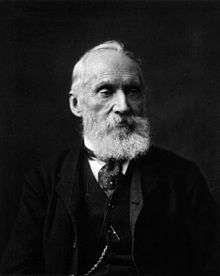
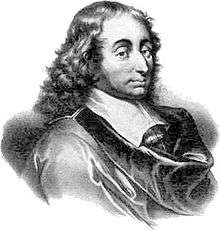


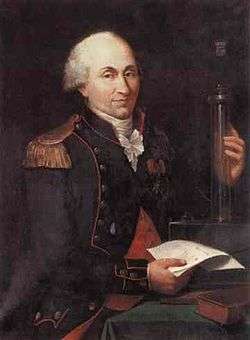




.jpg)
